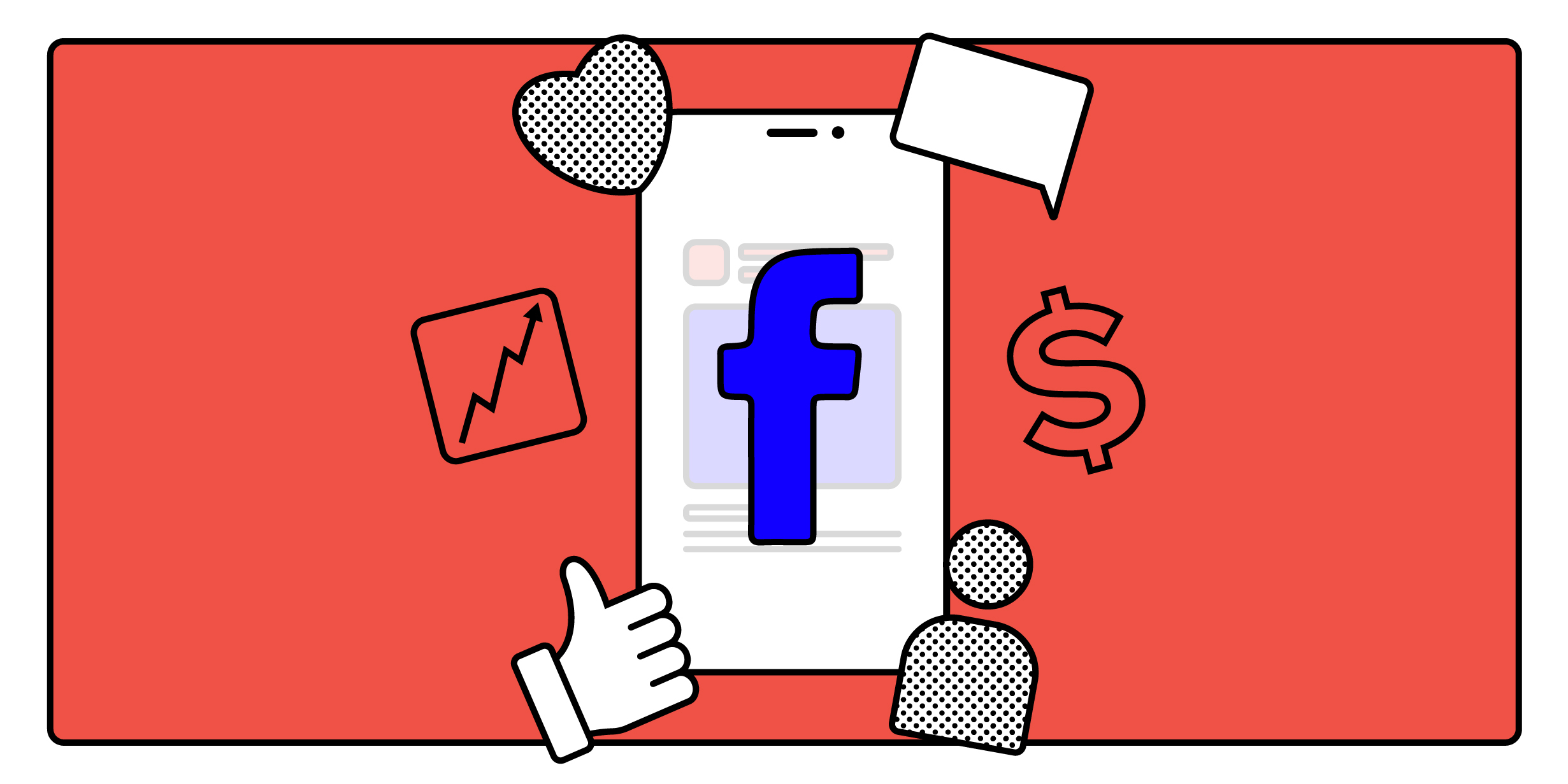We’re not saying our 2017 article is outdated, but Facebook Ads have come a long way in almost four years. If anything, it’s interesting to revisit how the process of creating an ad hasn’t changed much over time. In this 2021 installment, we’re going to take a closer look at how and why choosing the right Facebook Ad format is important. Let’s recap on the basics of creating an ad first, though.
How to Create a Facebook Ad:
- Define Your Strategy: Always an excellent first step. Set goals, identify your target audience, stick to a budget, and determine the duration of your ad.
- Captivate With Visuals: Use visual content to increase engagement with your ads. For example, product videos and motion graphics draw the eye as people scroll through their feed.
- Target Your Audience: Get your ad in front of your defined target audience so you can lower your cost per conversion.
- Test & Monitor Your Ad: Review your ad’s performance and adjust as needed. Not seeing the results you want? Tweak your content or target audience to test what works.
The process of creating a Facebook Ad is easier said than done, but following a basic strategy will allow you to remain organized and measure your campaign’s results. Up next, let’s dive into what’s new with Facebook Ads.
How has Advertising on Facebook Changed?
The history of advertising on Facebook is eventful, given its relatively short lifespan. Facebook Ads have become more advanced in their customization, targeting, and reporting. Sponsored Ads are created through Ads Manager, which is a detailed interface that gives you a quick glance at all of your current and past campaigns.
It’s important to note that Facebook Ads and boosted posts are not the same thing. A boosted post is considered the simplest way to advertise on Facebook, but audience targeting and ad placement options are limited. Facebook Ads offers advanced customization such as different ad placements, specific ad objectives, deeper creative control, and advanced targeting capabilities.
A correctly formatted ad looks professional, adds value to a brand, and allows your products and services to stand out from the competition. In fact, the amount of people ads can reach on Facebook has increased by over 45 million users since just July of 2020, solidifying thoughtful ads as being more critical than ever in the noisy world of social media.
Facebook Ad Formats, Explained
So, which format is right for you? Check out the list below to see when they’re most efficient:
1. Photo
The photo ad is a familiar format for advertising products. It’s no surprise photos are one of the best ways to showcase products in a lifestyle, which means using images of people doing everyday activities while using or wearing your product. Images are also great if you are short on time and need to create an advertisement in a pinch.
2. Video
Guaranteed to catch your audience’s eye, video ads are helpful when you want to demonstrate the functionality of your product or define the services you offer. Video ads can capture users’ attention, convey a sense of your personality, and help connect you with new audiences.
3. Stories
What is it about scrolling through stories that won’t let you put your phone down? Stories make us feel more connected, and a well-placed and well-constructed story ad can reach a customer in ways photos and videos can’t.
4. Messenger
With Messenger ads, you can interact with your customers at the closest level. When someone needs more information on a product or service, You can respond to their individual question and build a relationship in ways other ads can’t.
5. Carousel
The carousel ad is an evolved version of photo and video ads. With a carousel, you can show up to ten different photos or videos with their specific links. In addition, carousels can display products belonging to a common theme.
6. Slideshow
A slideshow ad can tell a story in ways many other ads can’t. Slideshows are also relatively easy to create if you need an immersive experience in a short amount of time. Another valuable feature of slideshows is they use 5X fewer data than videos, allowing you to reach people with slower connections.
7. Collection
Okay, you have great product photos and an excellent video of the same products in action. A collection allows you to put it all together and improve the shopping experience. A customer can watch your video showing your new running shoes in action, click on the picture of the running shoes to get more information, and purchase them all in the same journey.
8. Playable Content
Playable content is excellent for test driving a new game or app. Playable ads can start with a lead-in video, followed by a small preview of the game, and then end with a call to action to download the product. Playable ads are for more specific products, but they are still an effective way to engage with audiences.
Tie Your Facebook Advertising Strategy Together
We’ve briefly touched on the different types of Facebook Ads, but you can get the full scoop on this Facebook for Business page. If you’re wondering how you can keep track of your ads, Facebook Ads Manager is an excellent resource for seeing all of your campaigns in one spot. We’ll discuss managing ads another time, though.
Choosing an ad format can be overwhelming. That’s why it’s always important to remember the basics when planning your ad: craft a good strategy, use engaging visuals, target the right audience, and test your ad over time.
Want to know more about how Facebook Ads can help your business grow? Get in touch with us and start your project today.

